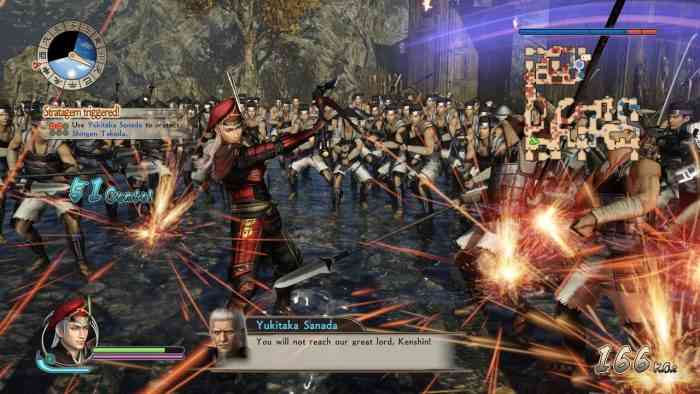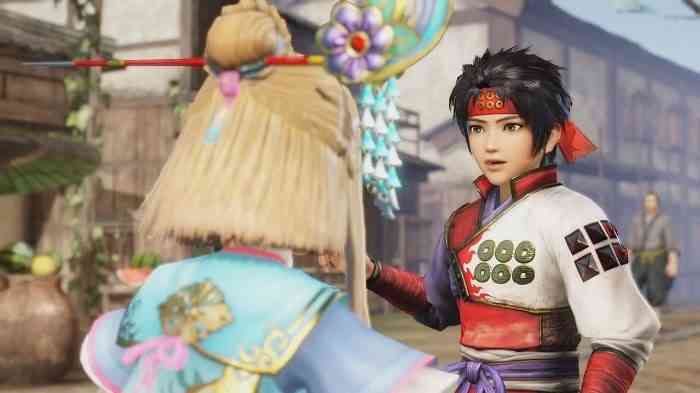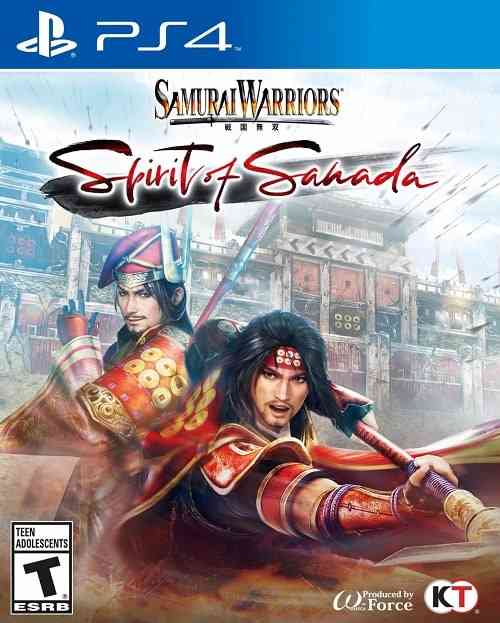Samurai Warriors: Spirit of Sanada Review
By the title ‘Samurai Warriors: Spirit of Sanada‘, you should pretty well know what you’re about to get into with this review by noting the words ‘samurai’ and the company ‘Koei Tecmo’ above, though that is not to say it’s necessarily a bad thing. Which, in and of itself, is actually a pretty accurate summary of what’s going to happen when you boot up Samurai Warriors: Spirit of Sanada. There’s a lot of familiarities but if that’s what you like, you’re going to really dig it. If it isn’t something you’re into, well, there’s no big surprises waiting for you.
The Musou genre is one that I’m quite familiar with at this point, having taken on several reviews in the genre after my initial love of Dynasty Warriors way back when. Quite frankly, I’m pretty burnt out on the genre as a whole. This isn’t Samurai Warriors fault, whatsoever, and I have to tip my hat to Omega Force who always do their best to spice things up and try to make something innovative in a fairly formulaic genre. They’ve certainly accomplished that with Spirit of Sanada but, sadly, it wasn’t a big enough change up to reinvigorate my Musou love.
__________________________
“I have to tip my hat to Omega Force who always do their best to spice things up and try to make something innovative in a fairly formulaic genre”
You’ve probably pieced together that the latest Samurai Warriors game focuses on the Sanada clan, a group that will be familiar to genre fans. We find them battling ninjas and rival warlords as you don the hat of various members of the warrior clan. One of the big differences that Spirit of Sanada utilizes is that there is more downtime for your character to interact with the villagers and other members of the clan. You can build friendships, learn details about the time period, people, and events, as well as getting a better feel for the land and, of course, gathering supplies to level your weapon up. Doing these actions also let you collect ‘Coins of Sanada’, which can be used to unlock Strategems for later battles. The story is probably the most focused I’ve seen thus far as they really try to give weight to the gameplay and let the players bond to the characters. I don’t think this really came off as well as they had hoped, but it was a notable change from what I’ve seen before.
This obviously comes secondary to the gigantic battles that these games thrive on. Don’t worry, there’s tons of that. You can chain attacks together to get absurdly numbered combo’s as you wade through waves of enemies, building towards your Musou attacks that can clear entire waves with a single attack. You also get a rage meter that, once full, let’s you unleash stronger attacks and lets you take more damage. String together enough KO’s in this mode and you can climb up through the tiers of Rage, getting stronger with each increase. They’ve tried to incorporate all of this together to mix up the gameplay. You can put together combos, fill your meters, wade into a mass of men and unleash hell. There’s certainly a number of different ways to collect enemy heads, but ultimately, the variations aren’t that different than the last time you slid into the genre.

They break up these sweeping, historic battles into small chunks to make them more digestible and have added a new layer to their missions. New multi-stage battles are introduced that finds your hero running across multiple areas for a single mission. Much of these are parts that can influence the larger battle. Attacking an opposing force could weaken them in the main attack or not properly defending one of your own commanders could have the same effect. This is where the aforementioned Strategems can be used to give you an advantage in an upcoming battle and they are as varied as the battles are. The Coins themselves are collected fairly easily, so you can use the Strategems fairly regularly which is definitely a big help.
However, for all these different ways to play, in the end, you’re still playing a Musou game. Yes, there are various attacks, various parameters to play within and you can use a couple of different heroes, but realistically, you’re just hacking your way through wave after wave of men, as if Zap Brannigan is a general on the other side. Within a matter of minutes, you are dully slashing your way through the horde and when you’re faced with a thousand inept foes, does your 500 hit combo even really matter?

Samurai Warriors: Spirit of Sanada, is an admirable effort by Omega Force to put a fresh spin on an old formula. For the most part, their use of the multi-stage battles, Strategems, bringing back the rage meter, as well as introducing some flashy new Musou attacks does the job. Fans of the genre will find plenty to love about this game as it keeps enough of the genre staples while still trying to keep you on your toes with some variations. I, however, think I have to hang up my Musou holster. I can respect that Omega Force has made strides to stand out from all of the other games in the genre, but after so many years, it isn’t enough to keep me interested. I grew bored pretty quick, though that may just be my jaded outlook. If you don’t feel beaten down by slashing your way through another sweeping battle, this may be the game for you. If you’ve related to my weariness for the genre, this one will only exasperate the feeling. At least I can say Spirit of Sanada was a pretty good way to say goodbye to this style of game.
*** PS4 code provided by the publisher ***
The Good
- Historically accurate
- A variation on a tested formula
- Fairly accessible
The Bad
- Fairly repetitive gameplay
- The story leaves a lot wanting

